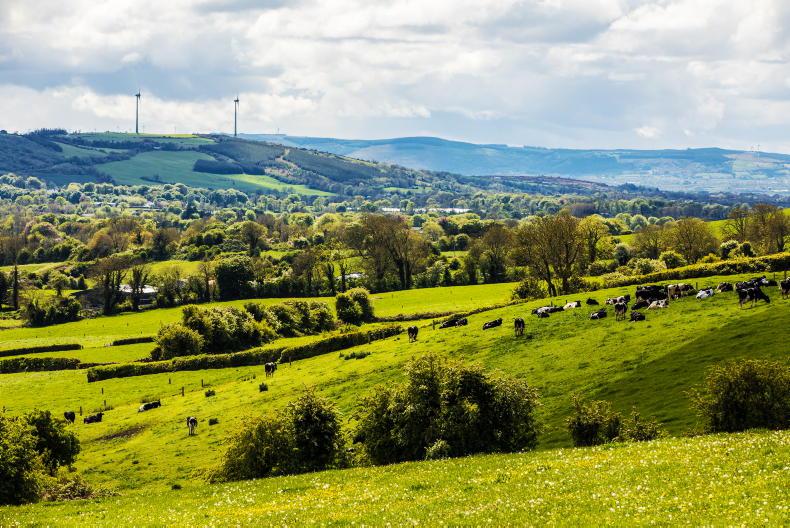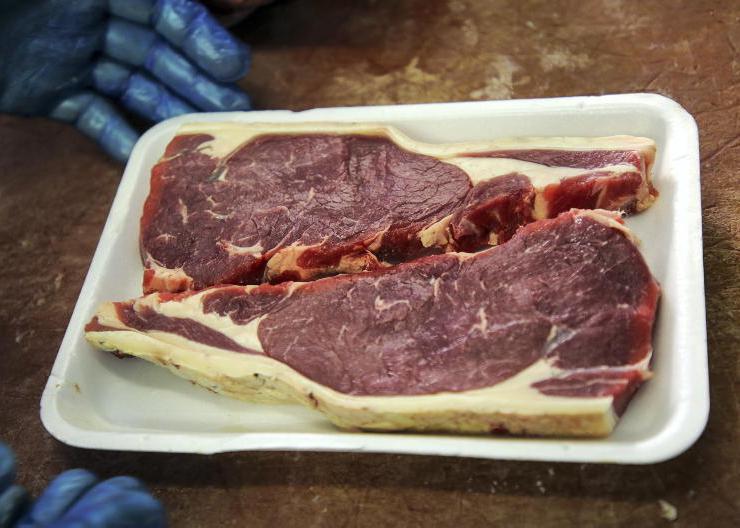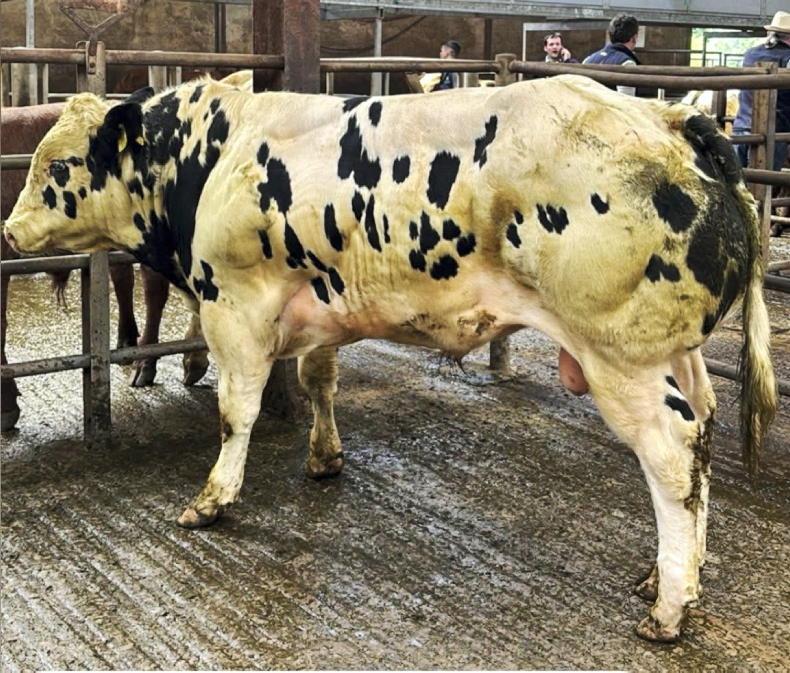The recently launched Sheep Improvement Scheme (SIS) is broadly similar to the current Sheep Welfare Scheme (SWS), with the main change being the introduction of a new action requiring farmers to purchase genotyped four- or five-star rams or DNA sire-verified rams.
The Department of Agriculture has published commonly asked questions and answers, which are detailed below.
There are still some questions outstanding, including how the first year of the scheme will operate in terms of compliance with the pregnancy scanning requirement for those who select that action.
Q. What is the SIS?
A. The SIS is funded under Ireland’s CAP strategic plan. It provides support to sheep farmers for carrying out actions that improve animal health and welfare in the sheep sector. It builds on the progress made by the SWS, which has now come to an end.
Q. How is the new scheme different to the SWS?
A. The SIS is very similar to the SWS, with the same approach of selecting two actions from a menu of options. The main difference is that all applicants will be required to carry out the genotyped ram action at least once during the lifetime of the scheme.
Q. Is the SIS an annual scheme?
A. The SIS will be a one-year contract, with automatic renewal unless the opt out is triggered by the farmer or the Department. It is proposed that the scheme will run for a five-year period.
Q. Who can apply to participate in the scheme?
A. Sheep farmers with breeding ewes can apply to participate in the scheme. Existing sheep farmers who wish to participate in the scheme must apply to join the scheme before 19 December 2022 deadline.
It will not be possible for existing sheep farmers to apply to join the scheme in subsequent years.
There will be provision for new entrants to sheep farming as defined in the terms and conditions of the scheme to apply to join the scheme.
Q. How are applications to the scheme submitted?
A. Applications are made by completing the SIS online application form available on www.agfood.ie.
Applications for year one of the scheme must be submitted by the closing date of midnight on Monday 19 December 2022.
I have forgotten my agfood.ie password/PAC, how do I reset it?
A. If you have forgotten your agfood.ie PAC, password, or are having any difficulties logging on, you can email the Department at agfood@agriculture.gov.ie or telephone 049-436 8288.
You can also write to: Online Services HelpDesk, Department of Agriculture, Food & the Marine, Government Offices, Farnham Street, Cavan, Co Cavan, H12 D459.
Q. What is the payment under the scheme?
A. Applicants will be paid €12 per breeding ewe up to the reference number of animals, which is determined at application stage based on previous year census returns.
Applicants must complete two actions, which are selected at application stage, to receive payment.
The payment rate of €12 per breeding ewe on completion of both welfare actions is composed of payment for category A action €7.00; payment for category B action €5.00.
Details in relation to the actions are set out in the terms and conditions of the scheme.
Q. When does the scheme year start?
A. The first year of the scheme will run from 1 February 2023 and will end on 31 December 2023.
For each subsequent year of the scheme, the scheme year will run from 1 January to 31 December each year.
Q. Should I choose my actions from the lowland flock or hill flock lists?
A. The scheme actions are applicable to flocks of breeding ewes and are separated into lowland and hill flock actions.
The decision as to which category an applicant belongs is based on the type of stock (lowland or hill) held in their 2021 sheep census return.
Applicants with greater than 50% lowland ewes must choose from the options for lowland flocks. Applicants with greater than 50% hill type ewes must choose from the options for hill flocks. Applicants who deem that they have been incorrectly categorised should notify the Department. Q. Tell me more about the genotyped ram action?
A. All applicants will be required to carry out the genotyped ram action at least once during the first three years of the scheme.
Genotyped ram becomes their category B action for that year(s). Applicants will carry out the genotyped ram rather than the other category B action in the year they have selected to carry out the genotyped ram action.
Where an applicant has a reference number greater than 150 breeding ewes, the applicant will be required to carry out the genotyped ram action twice over the lifetime of the scheme.
Applicants will select the year or years in which they will carryout the genotyped ram action when applying to participate in the scheme.
For each scheme year, applicants will be required to record completion of their actions in a record book provided to participants by the Department. Record books will be posted to successful applicants in January 2023.
Q. What are the specific requirements for the genotyped ram action?
A. Under this action, all applicants to the scheme will be required to purchase and use a ram in the first three years of the scheme, with applicants with a reference number of greater than 150 breeding ewes selecting to carry out this action for the second time in any scheme year after the first year they selected to carry out the action.
If you are farming a lowland flock, the ram must be four or five stars on the replacement or terminal index and have a genomic evaluation with Sheep Ireland at the time of purchase and be a type one, two or three for scrapie.
No type four or five scrapie genotyped rams will qualify.
If you are farming a hill flock, if the ram is a Scottish Blackface type sheep or a Cheviot, the ram only needs to be DNA sire-verified by Sheep Ireland and be a type one, two or three for scrapie at the time of purchase.
Alternatively, hill flock participants may purchase a four- or five-star ram on the replacement or terminal index and have a genomic evaluation with Sheep Ireland at the time of purchase and be a type one, two or three for scrapie.
No type four or five scrapie genotyped rams will qualify.
You may be required to submit evidence that you successfully completed the genotyped task. Such evidence may be in the form of, for example, a copy of the catalogue from the sale or a copy of the animals details from the www.ramsearch.ie and a copy of the dispatch docket that shows the purchase of the animal.
Q. Is it possible to change actions?
A. The two actions chosen when applying to join the scheme must be adhered to by the applicant for the full duration of the scheme. It is therefore not possible to changes actions once chosen.
Q. What is the reference number of eligible ewes?
A. For existing sheep farmers, the scheme reference number will be based on the average of three highest census return values of eligible breeding ewes over the years 2016 to 2021.
What if I didn’t return a sheep census in some of the years?
Where only two census returns have been made by the applicant over this time period, the scheme payment reference number will be based on the average of the two years census returns.
Where only one census return has been submitted during this time period, the scheme payment reference number will be based on the number of eligible breeding ewes declared in that census return.
Q. What will be my reference number if I am a new entrant?
A. Where no census details are available to the Department, for example in the case of an application from a new entrant to sheep farming who has yet to submit a sheep census for the first time, the scheme payment reference number will be allocated following a review of the submitted application.
This review will take into account the number of animals held by the applicant at the time of application and/or the number of animals declared on the sheep census return for the year prior to the scheme year for which the application is being made.
Q. Will I be paid on my reference number of ewes?
A. The scheme payment reference number will form the maximum number of breeding ewes eligible for payment for the duration of the scheme.
The scheme payment reference number will not increase for the duration of the scheme, except where an increase in stocking rates is required in the commonage measure for participants in the Agri Climate Rural Environment Scheme (ACRES).
If the number of breeding ewes returned on the 2023 or later sheep census, inspection report or administrative control report is lower than the scheme payment reference number, then the new lower number will become the scheme payment reference number.
It must be noted that where such circumstances occur and a higher number of breeding ewes is returned on the census in a subsequent year, then the scheme reference number for payment will increase accordingly, but not beyond the original scheme payment reference number.
Applicants should note that they are required to inform the Department before payment issues or prior to receipt of a notification of an administrative inspection if the number of breeding ewes they hold falls below the scheme payment reference number or most recent census figure.
The lower number of eligible breeding ewes will then become the eligible number for payment. Failure to inform the Department of the lower number may result in the application of a penalty.
If applicants retain their own ewe lambs, then these will satisfy any shortfall in ewe numbers once they reach 12 months of age.
Q. Is the scheme subject to inspection?
A. As with all EU-funded schemes, an inspection process will be in place, including on-site verification of animal numbers and inspection of record book and documents to confirm actions are carried out.
A percentage of farmers will also be requested to return their record books and documents to the Department for examination to confirm compliance. Co-operation with such requests is a condition of participation in the scheme.
Read more
Department confirm SIS-genotyped ram requirements
Changes needed to Sheep Improvement Scheme - IFA
The recently launched Sheep Improvement Scheme (SIS) is broadly similar to the current Sheep Welfare Scheme (SWS), with the main change being the introduction of a new action requiring farmers to purchase genotyped four- or five-star rams or DNA sire-verified rams.
The Department of Agriculture has published commonly asked questions and answers, which are detailed below.
There are still some questions outstanding, including how the first year of the scheme will operate in terms of compliance with the pregnancy scanning requirement for those who select that action.
Q. What is the SIS?
A. The SIS is funded under Ireland’s CAP strategic plan. It provides support to sheep farmers for carrying out actions that improve animal health and welfare in the sheep sector. It builds on the progress made by the SWS, which has now come to an end.
Q. How is the new scheme different to the SWS?
A. The SIS is very similar to the SWS, with the same approach of selecting two actions from a menu of options. The main difference is that all applicants will be required to carry out the genotyped ram action at least once during the lifetime of the scheme.
Q. Is the SIS an annual scheme?
A. The SIS will be a one-year contract, with automatic renewal unless the opt out is triggered by the farmer or the Department. It is proposed that the scheme will run for a five-year period.
Q. Who can apply to participate in the scheme?
A. Sheep farmers with breeding ewes can apply to participate in the scheme. Existing sheep farmers who wish to participate in the scheme must apply to join the scheme before 19 December 2022 deadline.
It will not be possible for existing sheep farmers to apply to join the scheme in subsequent years.
There will be provision for new entrants to sheep farming as defined in the terms and conditions of the scheme to apply to join the scheme.
Q. How are applications to the scheme submitted?
A. Applications are made by completing the SIS online application form available on www.agfood.ie.
Applications for year one of the scheme must be submitted by the closing date of midnight on Monday 19 December 2022.
I have forgotten my agfood.ie password/PAC, how do I reset it?
A. If you have forgotten your agfood.ie PAC, password, or are having any difficulties logging on, you can email the Department at agfood@agriculture.gov.ie or telephone 049-436 8288.
You can also write to: Online Services HelpDesk, Department of Agriculture, Food & the Marine, Government Offices, Farnham Street, Cavan, Co Cavan, H12 D459.
Q. What is the payment under the scheme?
A. Applicants will be paid €12 per breeding ewe up to the reference number of animals, which is determined at application stage based on previous year census returns.
Applicants must complete two actions, which are selected at application stage, to receive payment.
The payment rate of €12 per breeding ewe on completion of both welfare actions is composed of payment for category A action €7.00; payment for category B action €5.00.
Details in relation to the actions are set out in the terms and conditions of the scheme.
Q. When does the scheme year start?
A. The first year of the scheme will run from 1 February 2023 and will end on 31 December 2023.
For each subsequent year of the scheme, the scheme year will run from 1 January to 31 December each year.
Q. Should I choose my actions from the lowland flock or hill flock lists?
A. The scheme actions are applicable to flocks of breeding ewes and are separated into lowland and hill flock actions.
The decision as to which category an applicant belongs is based on the type of stock (lowland or hill) held in their 2021 sheep census return.
Applicants with greater than 50% lowland ewes must choose from the options for lowland flocks. Applicants with greater than 50% hill type ewes must choose from the options for hill flocks. Applicants who deem that they have been incorrectly categorised should notify the Department. Q. Tell me more about the genotyped ram action?
A. All applicants will be required to carry out the genotyped ram action at least once during the first three years of the scheme.
Genotyped ram becomes their category B action for that year(s). Applicants will carry out the genotyped ram rather than the other category B action in the year they have selected to carry out the genotyped ram action.
Where an applicant has a reference number greater than 150 breeding ewes, the applicant will be required to carry out the genotyped ram action twice over the lifetime of the scheme.
Applicants will select the year or years in which they will carryout the genotyped ram action when applying to participate in the scheme.
For each scheme year, applicants will be required to record completion of their actions in a record book provided to participants by the Department. Record books will be posted to successful applicants in January 2023.
Q. What are the specific requirements for the genotyped ram action?
A. Under this action, all applicants to the scheme will be required to purchase and use a ram in the first three years of the scheme, with applicants with a reference number of greater than 150 breeding ewes selecting to carry out this action for the second time in any scheme year after the first year they selected to carry out the action.
If you are farming a lowland flock, the ram must be four or five stars on the replacement or terminal index and have a genomic evaluation with Sheep Ireland at the time of purchase and be a type one, two or three for scrapie.
No type four or five scrapie genotyped rams will qualify.
If you are farming a hill flock, if the ram is a Scottish Blackface type sheep or a Cheviot, the ram only needs to be DNA sire-verified by Sheep Ireland and be a type one, two or three for scrapie at the time of purchase.
Alternatively, hill flock participants may purchase a four- or five-star ram on the replacement or terminal index and have a genomic evaluation with Sheep Ireland at the time of purchase and be a type one, two or three for scrapie.
No type four or five scrapie genotyped rams will qualify.
You may be required to submit evidence that you successfully completed the genotyped task. Such evidence may be in the form of, for example, a copy of the catalogue from the sale or a copy of the animals details from the www.ramsearch.ie and a copy of the dispatch docket that shows the purchase of the animal.
Q. Is it possible to change actions?
A. The two actions chosen when applying to join the scheme must be adhered to by the applicant for the full duration of the scheme. It is therefore not possible to changes actions once chosen.
Q. What is the reference number of eligible ewes?
A. For existing sheep farmers, the scheme reference number will be based on the average of three highest census return values of eligible breeding ewes over the years 2016 to 2021.
What if I didn’t return a sheep census in some of the years?
Where only two census returns have been made by the applicant over this time period, the scheme payment reference number will be based on the average of the two years census returns.
Where only one census return has been submitted during this time period, the scheme payment reference number will be based on the number of eligible breeding ewes declared in that census return.
Q. What will be my reference number if I am a new entrant?
A. Where no census details are available to the Department, for example in the case of an application from a new entrant to sheep farming who has yet to submit a sheep census for the first time, the scheme payment reference number will be allocated following a review of the submitted application.
This review will take into account the number of animals held by the applicant at the time of application and/or the number of animals declared on the sheep census return for the year prior to the scheme year for which the application is being made.
Q. Will I be paid on my reference number of ewes?
A. The scheme payment reference number will form the maximum number of breeding ewes eligible for payment for the duration of the scheme.
The scheme payment reference number will not increase for the duration of the scheme, except where an increase in stocking rates is required in the commonage measure for participants in the Agri Climate Rural Environment Scheme (ACRES).
If the number of breeding ewes returned on the 2023 or later sheep census, inspection report or administrative control report is lower than the scheme payment reference number, then the new lower number will become the scheme payment reference number.
It must be noted that where such circumstances occur and a higher number of breeding ewes is returned on the census in a subsequent year, then the scheme reference number for payment will increase accordingly, but not beyond the original scheme payment reference number.
Applicants should note that they are required to inform the Department before payment issues or prior to receipt of a notification of an administrative inspection if the number of breeding ewes they hold falls below the scheme payment reference number or most recent census figure.
The lower number of eligible breeding ewes will then become the eligible number for payment. Failure to inform the Department of the lower number may result in the application of a penalty.
If applicants retain their own ewe lambs, then these will satisfy any shortfall in ewe numbers once they reach 12 months of age.
Q. Is the scheme subject to inspection?
A. As with all EU-funded schemes, an inspection process will be in place, including on-site verification of animal numbers and inspection of record book and documents to confirm actions are carried out.
A percentage of farmers will also be requested to return their record books and documents to the Department for examination to confirm compliance. Co-operation with such requests is a condition of participation in the scheme.
Read more
Department confirm SIS-genotyped ram requirements
Changes needed to Sheep Improvement Scheme - IFA









SHARING OPTIONS